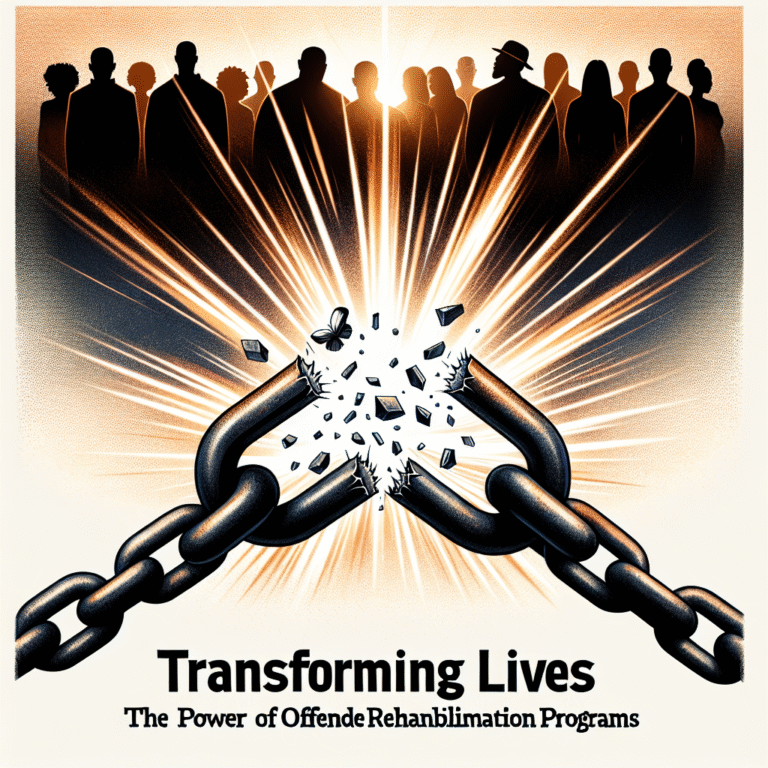
Introduction
Imagine a world where investigators could pinpoint the likely whereabouts of a serial offender before they strike again. This is not a plot from a gripping crime drama, but rather the powerful reality of geographic profiling. In a landscape where law enforcement faces monumental challenges in tracking down elusive criminals, geographic profiling emerges as a beacon of hope. This technique combines traditional crime-solving methods with sophisticated geographical analysis, enabling authorities to map out the behaviors and tendencies of serial offenders with striking precision.
In this article, we will delve into the intricate workings of geographic profiling, explore its practical applications through compelling case studies, and discuss how this innovative approach is transforming the landscape of criminal investigations. Join us as we uncover the processes, successes, and future potential of using geographic profiling to map justice and bring serial offenders to justice.
Understanding Geographic Profiling
What is Geographic Profiling?
Geographic profiling is a technique used by law enforcement to analyze the locations of a series of crimes in order to predict the likely home or base of the offender. This method considers various factors such as crime scenes, the timing of offenses, and geographic features to create a spatial profile. At its core, geographic profiling leverages the principles of behavioral geography and spatial theory to illuminate patterns that might not be immediately apparent.
The Science Behind Geographic Profiling
At the heart of geographic profiling lies a blend of statistics, psychology, and geography. The technique operates on the premise that criminals often have a comfort zone, typically defined by their residence, work, or frequented locations. By mapping these crime scenes and analyzing them in conjunction with population data, investigators can create a geographic profile that highlights where an offender is most likely living or operating.
Key Components of Geographic Profiling
- Geographical Data: Accurate mapping of crime scenes and the surrounding environment.
- Statistical Analysis: Utilizing algorithms and statistical tools to identify patterns and make predictions.
- Behavioral Patterns: Analyzing how offenders behave based on psychological principles and past actions.
The Role of Technology in Geographic Profiling
Geographic Information Systems (GIS)
The development of Geographic Information Systems (GIS) has revolutionized the way law enforcement approaches geographic profiling. GIS software allows for the integration of various data sources, including demographic information, transportation routes, and crime statistics, helping investigators visualize patterns and access critical insights.
Data Mining and Machine Learning
Advancements in data mining and machine learning algorithms have enhanced the accuracy of geographic profiling. By analyzing vast amounts of data from various sources, law enforcement agencies can make more informed predictions about potential offenders’ locations and behaviors.
Example Technologies in Use
| Technology | Description |
|---|---|
| GIS Software | Integrates various datasets for spatial analysis |
| CrimeStat | A software tool designed to analyze crime data |
| Predictive Policing | Uses historical data to anticipate future crime patterns |
Case Studies Illustrating the Impact of Geographic Profiling
Case Study 1: The Green River Killer
Gary Ridgway, known as the Green River Killer, operated in the Seattle area during the 1980s and 1990s, claiming at least 49 victims. Investigators faced a monumental challenge due to the vast geographic spread of the murders. By employing geographic profiling techniques, they were able to narrow down their focus, leading them to identify Ridgway’s work and home locations, ultimately resulting in his capture in 2001.
Analysis: This case illustrates the power of geographic profiling in reducing the search area and focusing resources on likely offenders. The application of spatial analysis allowed investigators to understand Ridgway’s modus operandi, enhancing their approach to tracking him down.
Case Study 2: The Beltway Sniper Attacks
In 2002, a series of sniper shootings in the Washington, D.C. area left the public in terror. The FBI employed geographic profiling to analyze the locations of the shootings, which provided critical insights into the shooters’ likely escape routes and bases of operation. This information was vital in narrowing down the search, leading to the eventual capture of John Allen Muhammad and Lee Boyd Malvo.
Analysis: The Beltway Sniper case exemplifies how geographic profiling can be crucial in high-pressure situations. By understanding the geographical context of the crimes, investigators could effectively prioritize leads and coordinate their efforts.
Case Study 3: The Colonial Parkway Killer
Between 1986 and 1989, a series of murders along the Colonial Parkway in Virginia puzzled law enforcement. Geographic profiling was utilized to determine the most likely area of the offender’s residence, leading investigators to focus on a specific location. This case highlights the importance of continuously updating and refining geographic profiles as new evidence comes to light.
Analysis: This case underscores the necessity of adaptive profiling; as new data is gathered, updating the geographic profiles becomes essential for effective investigation. Geographic profiling can direct investigators toward areas where the offender is likely to be most familiar.
The Benefits of Geographic Profiling
Reducing Investigation Time
One of the primary benefits of geographic profiling is its ability to significantly reduce the time needed to investigate a case. By narrowing down the suspect pool to a specific geographic area, law enforcement can allocate resources more effectively.
Enhancing Resource Allocation
In a world where police departments often face staffing shortages and budget constraints, geographic profiling offers a strategic method to maximize limited resources. By identifying high-probability areas for offenders’ residences, law enforcement can prioritize patrols and investigations.
Increasing Solvability of Cases
Geographic profiling has led to a notable increase in the solvability rate of serial offenses. By utilizing this technique, departments can tackle cases that may otherwise remain unsolved, bringing closure to victims’ families and communities.
Challenges and Limitations
Dependence on Quality Data
Geographic profiling is only as effective as the data that informs it. Inaccurate or incomplete crime data can lead to misleading conclusions, emphasizing the need for high-quality input.
Criminal Adaptability
As offenders evolve and adapt their methods, law enforcement must continuously refine their geographic profiles. This means not only updating crime data but also remaining vigilant to changes in criminal behavior and environment.
Ethical Considerations
There are ethical questions surrounding the use of geographic profiling, particularly when it comes to surveillance and the profiling of potential suspects. Balancing effective investigation with privacy rights is an ongoing challenge that law enforcement agencies must navigate.
Conclusion
The power of geographic profiling in catching serial offenders cannot be overstated. As we’ve seen through compelling case studies and real-world applications, this technique is a vital tool in law enforcement’s arsenal, enabling them to map justice effectively. By harnessing technology, analyzing behavior, and understanding geographic patterns, investigators can uncover the hidden connections that lead to the capture of elusive criminals.
As we look toward the future, the continued development of geographic profiling will likely play an increasingly critical role in solving crimes and enhancing public safety. The journey to justice may be complex, but with innovative techniques like geographic profiling, we are one step closer to ensuring a safer world for all.
FAQs
1. What is geographic profiling?
Geographic profiling is a method used by law enforcement to analyze crime scene locations to predict an offender’s likely base of operations, typically their residence.
2. How effective is geographic profiling in solving cases?
Geographic profiling has proven effective in various cases, significantly reducing investigation time and increasing the solvability rate of serial offenses.
3. What technologies are used in geographic profiling?
Key technologies in geographic profiling include Geographic Information Systems (GIS), crime analysis software like CrimeStat, and predictive policing algorithms.
4. Are there ethical concerns related to geographic profiling?
Yes, ethical concerns include privacy issues and the potential for misuse or over-reliance on profiling, which can impact civil liberties.
5. Can geographic profiling be used in all types of crimes?
While geographic profiling is most effective for serial offenses, its principles can also be applied to various crime types, particularly those with identifiable patterns.
Through understanding and employing mapping justice via geographic profiling, we can continue to enhance our approach to law enforcement and increase the likelihood of capturing serial offenders.

















